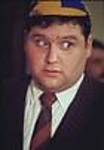As a scratchbuilder and dioramist, I frequently turn to sources outside the confines of scale modeling to complete projects.
In my home region there are several plastic retailers where sheet styrene and other polymer stock can be purchased almost by the yard in various thicknesses. Since I have occasionally worked on major ships in extreme scales, trips to the lumber yard and even art supply stores (to get inexpensive artist brushes for 8-inch gun barrels in 1:48) are in order. Our friends in the model railroad hobby, of course, have a wealth of detail parts that come in handy for outfitting vessels: for a Battle of Samar project involving some Lindberg Fletchers, brass and plastic air brake detail parts can be arranged to represent all manner of ship fittings in this odd (1:125) scale, not to mention access to a wonderful array of injection molded human figures in several scales.
For naval diorama work, a well-stocked art supply store is the modeler's best asset: I use Liquitex' modeling paste to sculpt my opaque water surfaces and types of foamcore for the bases (in my museum work I came across a product called Gator Board which is just as light as foam core but is so stiff it doesn't require bracing and is far more resistant to warpage when exposed to mositure). For water that is either translucent (as in cube-of-the-sea projects) I opt for rippled plexiglass for its strength.
As a dioramist, I prefer subjects that are in the heat of action and this requires much more specialized techniques. For dynamic water effects like near miss water columns and fire hose streams, Halloween artificial spider webbing is excellent because it has fibres that tend to run in the same direction and it takes paint and CA glues well. Pyrotechnic effects use a myriad of diffuse items like kitchen parchment, shrink wrap plastic, special ultra-violet paints, and electric lighting from old table lamps to homemade miniature rigs from Radio Shack. Smoke, be it from guns, chemical generators, funnels, or fires comes from polyfiber (the material used to stuff pillows and teddy bears) not just because of its fluffiness, but because it can accept paint without shriveling up like natural cotton balls do.
I am always exploring for more odd items to detail models and produce accurate diorama effects: the trick is to think in terms of form or shape, not just function and you will be amazed at what is out there in other outlets waiting for your creative touch.
--Karl




















